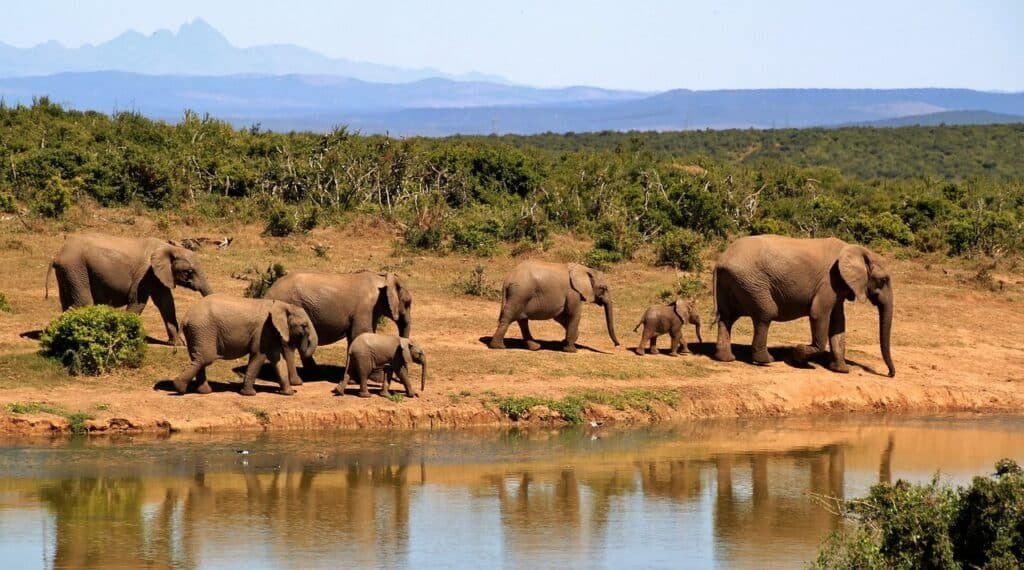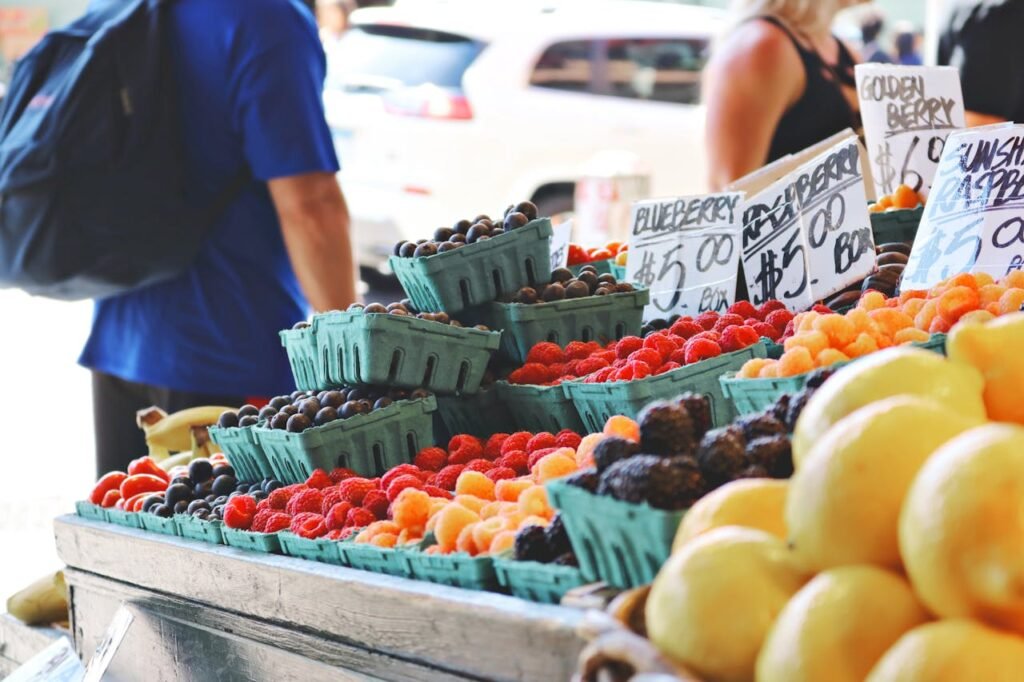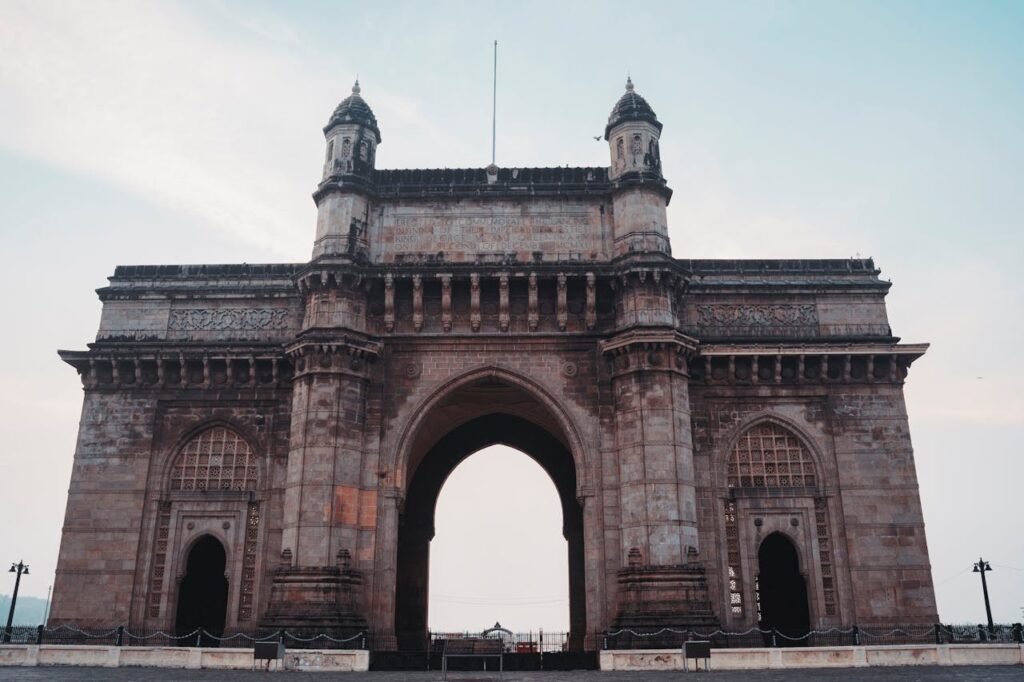Discover the best time of year to go on African Safari with side-by-side comparisons of wildlife, weather, crowds, and cost in top destinations.
Best Time of Year to Go on African Safari: Guaranteed Wildlife Viewing
Zebras grazing in the African savanna. African safaris are spectacular year-round, but the best time of year to go on African Safari often coincides with dry seasons when wildlife congregates at waterholes. Safaris typically start at dawn – visitors “quickly fall into the routine of pre-dawn starts… active afternoons,” maximizing animal sightings- nationalgeographic.com.
In East Africa, the long dry spell (roughly June–October) is prime time, while the short rains (Nov–Dec) and long rains (Mar–May) bring lush scenery, abundant birds, and far fewer tourists (often at discounted prices). Travelers who prioritize big-game viewing usually favor the dry season; those who want green landscapes, baby animals, and lower rates might choose a shoulder or rainy season. National Geographic’s travel guide highlights this rhythm, noting how safari days exploit early morning and late afternoon light for wildlife watching.
By Destination: Best Time of Year to Go on African Safari
| Country | Dry Season (Jun–Oct) | Wet Season (Nov–Apr) | Wildlife Highlights |
|---|---|---|---|
| Kenya | Clear skies and great visibility; peak game drives. Crowds: High Jun–Oct (esp. Masai Mara); Pricing: Premium– please check here. | Rainy (Apr–May) with green landscapes; Crowds: Low; Pricing: Lower– please check here. | Great Wildebeest Migration (Jul–Sep); year-round Big Five (lion, elephant, etc.) |
| Tanzania | Dry, cool weather; Crowds: Peak Jul–Oct; Pricing: High during migration | Short rains Nov–Dec, long rains Mar–May; Crowds: Sparse; Pricing: Discounts | Serengeti Migration (Jul–Oct); Ngorongoro and Tarangire attractions |
| South Africa | Dry winter (May–Sep); bush sparse so animals gather at water. Crowds: High in parks; Pricing: High (winter). | Summer rains (Nov–Mar) on coasts; Crowds: Best for beaches, less safari-viewing; Pricing: Mixed | Kruger NP Big Five (excellent year-round); whale-watching (Cape) in July–Nov |
| Botswana | Dry (Jun–Oct) with Okavango Delta at peak; Crowds: Peak Jul–Sep; Pricing: Premium. | Wet (Nov–Apr), green season with many birds; Crowds: Low; Pricing: Discounted | Elephants, lions, wild dogs in Okavango and Chobe (Jul–Sep); massive bird migrations in wet season |
| Namibia | Dry (Jun–Oct) desert safari; Crowds: High in popular parks; Pricing: High Jul–Oct. | Rains (Dec–Apr) are light; green season with waterholes; Crowds: Few; Pricing: Lower | Etosha wildlife at waterholes in dry; spectacular dunes and desert-adapted species |
The table above summarizes how seasons affect weather, crowds, and wildlife in each country. In general, dry seasons (June–October) offer the clearest conditions for game drives. All five destinations have abundant wildlife in the dry months, but they also see the most visitors and highest costs then. Wet seasons (roughly November–April) bring lush scenery and fewer tourists, but heavy rains in some parks can make roads difficult and scatter animals. Consider these trade-offs when planning.
Kenya: Best Time of Year to Go on African Safari
A lion in Kenya’s Maasai Mara National Reserve. In Kenya, the best time of year to go on African Safari is widely considered the dry season (roughly June–October, plus a short Jan–Feb window). During this period the grass is low, and animals gather around shrinking water sources, so wildlife sightings (especially of elephants, lions, giraffes and zebras) are excellent.
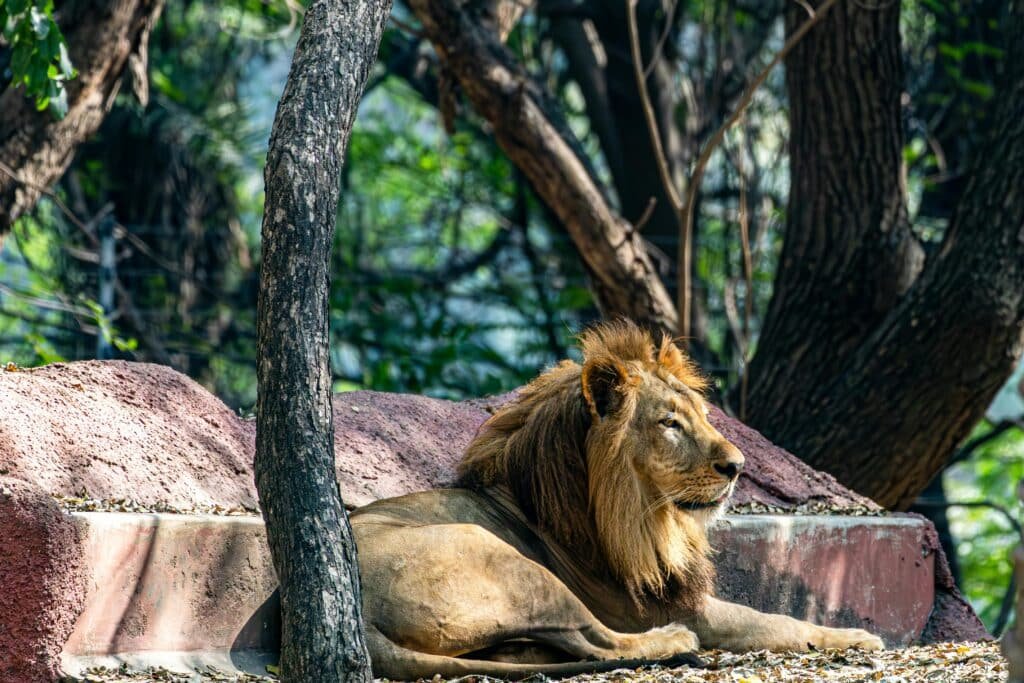
The Great Wildebeest Migration reaches Kenya’s Maasai Mara around July–September, a once-in-a-lifetime spectacle. Expect heavy crowds and peak prices in July–October (the Mara is especially busy then). In contrast, the April–May rains bring greener scenery, very few tourists, and discounted safari rates. Safari Bookings confirms that June–October and January–February are Kenya’s top months for game viewing, while April–May is low season.
Tanzania: Best Time of Year to Go on African Safari
A cheetah in Tanzania’s Serengeti National Park. In Tanzania, the dry season (June–October) is generally the best time of year to go on African Safari. The classic northern circuit (Serengeti, Ngorongoro, Tarangire) is at its prime then, and the Great Migration’s herds gather in the Serengeti from mid-year.
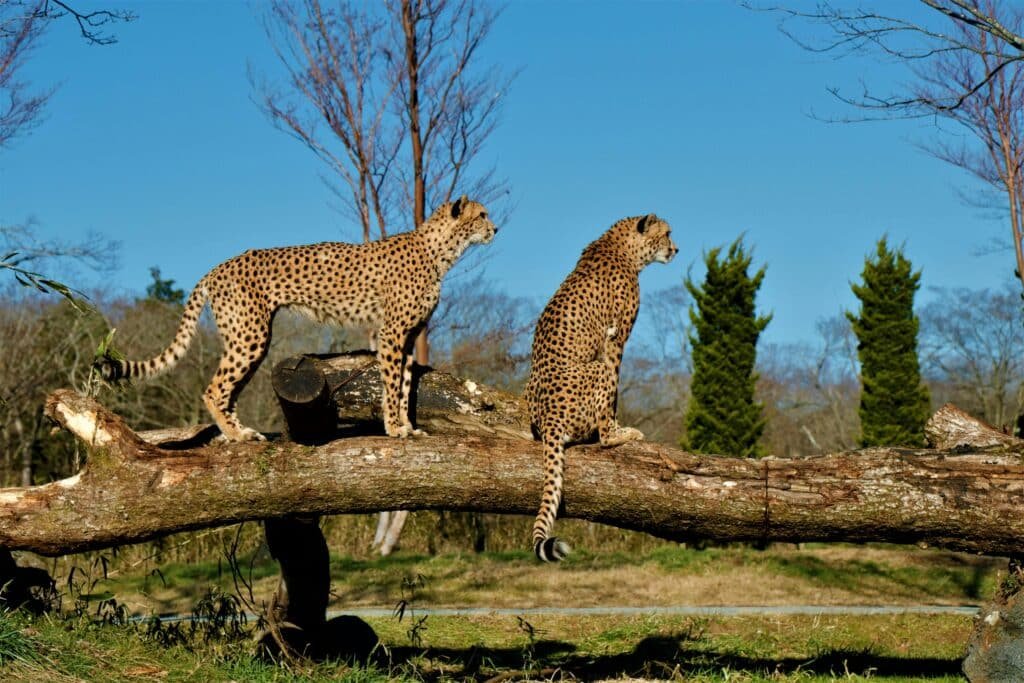
Cool, clear days mean great predator viewing. Tourist numbers and prices peak in July–October for this reason. The wet season (March–May) offers verdant landscapes and newborn wildlife, and many lodges drop their rates – but heavy rains can make some roads impassable. As Safari Bookings warns, “the wettest months are March to May, and any safari might be compromised at this time”.
South Africa: Best Time of Year to Go on African Safari
A white rhinoceros in a South African reserve. South Africa has diverse climates, but most safari areas shine in the Southern Hemisphere winter (May–September), which many travelers regard as the best time of year to go on African Safari. Kruger National Park and other big-game reserves thin out during the dry winter: vegetation is sparse and animals crowd around waterholes, making sightings easier.
Safari Bookings notes that “most of the country’s key parks and reserves are at their best in the southern hemisphere winter months of May to September”. (Be aware that coastal destinations and Cape Town are actually best in summer – November to March – but inland safaris are then hotter and lusher.) School holidays in June–July can draw many families to Kruger, so lodging fills up, whereas the off-season (warm, wet summer months) sees fewer visitors and some price reductions.
Botswana: Best Time of Year to Go on African Safari
A herd of elephants at a watering hole in Botswana’s Okavango Delta. In Botswana, the best time of year to go on African Safari is often the dry winter months (July–September). This is when the Okavango Delta is in flood, the Kalahari waterholes are limited, and wildlife is highly concentrated and easy to find.
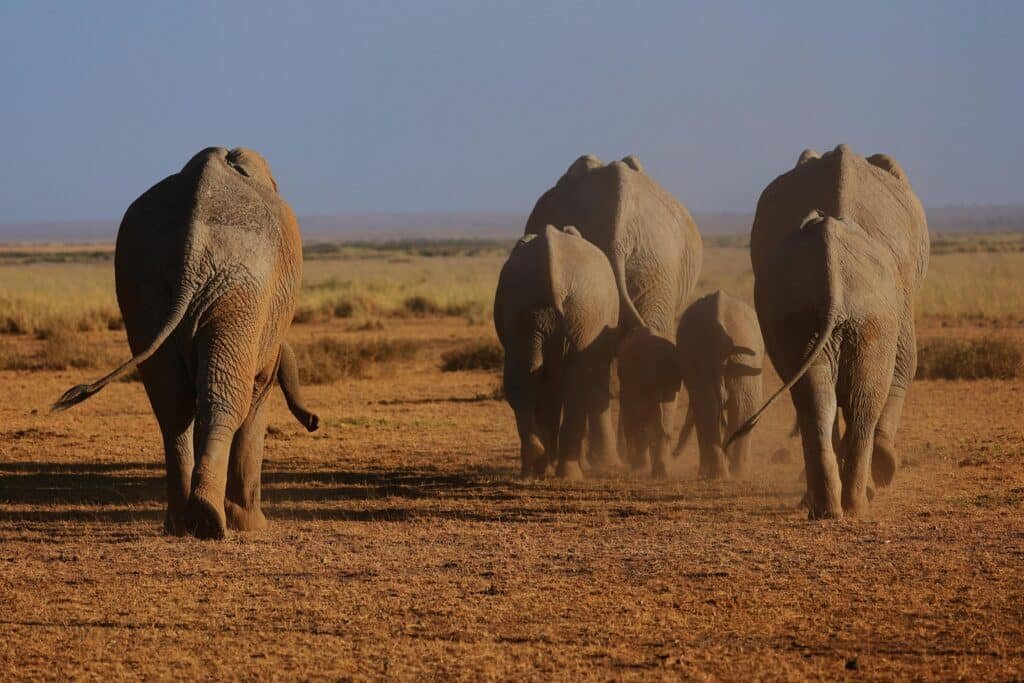
Safari Bookings explains that “July to September is excellent with generally dry conditions, plenty of water in the Delta’s waterways and wildlife in abundance”. Of course, these months see the highest demand and lodges charge premium rates. The green season (November–April) brings enormous flocks of migratory birds and lush landscapes, with low-season prices, but heavy rains can make travel challenging and animals disperse. A compromise is May–June (shoulder season), which still has good weather and more moderate rates.
Namibia: Best Time of Year to Go on African Safari
Namibia: Due to its arid environment, Namibia’s conditions are somewhat different. However, many experts say June (and May) is the prime time for a Namibian safari. Winter (June–October) brings cool nights and warm days – ideal for exploring Etosha National Park, desert dunes, and canyon areas. Safari Bookings notes that July–October is “excellent with generally dry, clear weather”.
Rain is infrequent (mostly Dec–Apr) but when it comes it turns the desert briefly green and attracts many birds – at the cost of some muddy roads. Wildlife in Namibia (especially in Etosha) is more scattered, but in the dry season animals concentrate around waterholes. Peak crowds and prices occur in July–October, while the months just before the rains (Dec–Feb) see fewer tourists and lower rates.
In summary, the best time of year to go on African Safari will depend on your priorities. If you want guaranteed wildlife viewing and don’t mind higher costs, aim for the dry season in your destination (e.g. Jul–Oct in East Africa, or May–Sep in Southern Africa). If you prefer green scenery, fewer people, and lower prices, the shoulder or rainy seasons (when they are safe for travel) can be very rewarding. For detailed planning, check out our comprehensive safari packing list and essential travel tips for safari on the Touring Diary Adventure site.
Authoritative guides like Safari Bookings and National Geographic also offer in-depth insights on timing and wildlife behavior in each country. With the right timing, you can make the most of your African safari – whether that’s tracking the Great Migration in Kenya and Tanzania, spotting lions and rhinos in South Africa, or watching elephants in Botswana’s Delta. Plan accordingly, and you’re set to witness Africa’s wildlife wonders at their finest.

